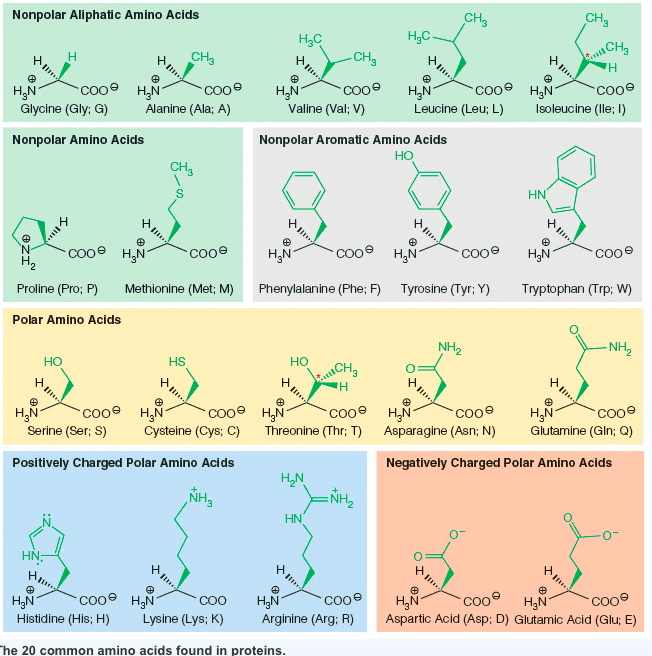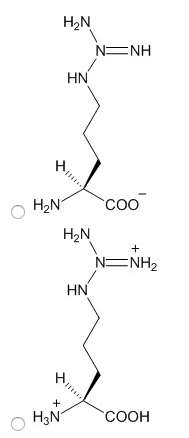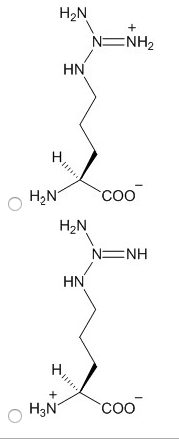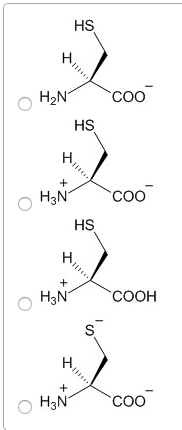Question 9
Codominance is a form of inheritance in which two different allelesfor a gene are both expressed, and neither allele is dominant overthe other. One example of codominance is fur color in cattle; thealleles for red fur and white fur are codominant. If a homozygousred cow and a homozygous white bull mate, what would you expect tofind in their offspring?.912.l.16.2>
They will all have white fur.
Their fur will be a mixture of red and white hairs.
Their fur will be a lighter shade of red.
They will all have red fur.
Question 10
If a tRNA molecule has an anticodon which reads AUG, what will itmatch up with and what amino acid is it carrying?
.912.l.16.5>
| U | | C | | A | | G | | |
| UUU | Phenylalanine | UCU | Serine | UAU | Tyrosine | UGU | Cysteine | U |
U | UUC | Phenylalanine | UCC | Serine | UAC | Tyrosine | UGC | Cysteine | C |
| UUA | Leucine | UCA | Serine | UAA | Stop | UGA | Stop | A |
| UUG | Leucine | UCG | Serine | UAG | Stop | UGG | Tryptophan | G |
| CUU | Leucine | CCU | Proline | CAU | Hisitidine | CGU | Arginine | U |
C | CUC | Leucine | CCC | Proline | CAC | Hisitidine | CGC | Arginine | C |
| CUA | Leucine | CCA | Proline | CAA | Glutamine | CGA | Arginine | A |
| CUG | Leucine | CCG | Proline | CAG | Glutamine | CGG | Arginine | G |
| AUU | Isoleucine | ACU | Threonine | AAU | Asparagine | AGU | Serine | U |
A | AUC | Isoleucine | ACC | Threonine | AAC | Asparagine | AGC | Serine | C |
| AUA | Isoleucine | ACA | Threonine | AAA | Lysine | AGA | Arginine | A |
| AUG | Methionine/Start | ACG | Threonine | AAG | Lysine | AGG | Arginine | G |
| GUU | Valine | GCU | Alanine | GAU | Aspartate | GGU | Glycine | U |
G | GUC | Valine | GCC | Alanine | GAC | Aspartate | GGC | Glycine | C |
| GUA | Valine | GCA | Alanine | GAA | Glutamate | GGA | Glycine | A |
| GUG | Valine | GCG | Alanine | GAG | Glutamate | GGG | Glycine | G |
It is carrying arginine and will match with a CGU codon on themRNA.
It is carrying methionine and will match with a TAC codon on theDNA.
It is carrying methionine and will match with a UAC codon on themRNA.
It is carrying tyrosine and will match with a UAC codon on themRNA.
Question 11
While the DNA in a human skin cell was being replicated, a singlebase was miscopied. What will be the most likely result of this forthe cell in which it happened?.912.l.16.3>
All the proteins the cell creates from the miscopied strand willdo different jobs than the old ones.
If the new sequence codes for the same amino acid as theoriginal cell, it will function normally.
Both new DNA strands will end up together in a new cell, and theinaccurate one will be discarded.
Any miscopied DNA will be replaced with an accurate DNA copyonce the cell divides.
Question 12
A ferret's haploid number of chromosomes is 20. How would thenumber of chromosomes in the ferret's body cells compare to thenumber of chromosomes in its gametes?.912.l.16.17>
Its body cells would have 20 chromosomes, and its gametes wouldhave 40 chromosomes.
Its body cells and gametes would both have 40 chromosomes.
Its body cells and gametes would both have 20 chromosomes.
Its body cells would have 40 chromosomes, and its gametes wouldhave 20 chromosomes.
Question 13
A body cell is in the longest stage of its life cycle. The cellgrows, synthesizing proteins and increasing in size. Eventually,the cell will grow too large to carry out normal activities. Whichof the following is the best conclusion you can make about the lifecycle of this cell?.912.l.16.14>
The cell is close to the end of its life cycle, and a chemicalsignal will initiate cell death.
The cell is ready to undergo mitosis, and a chemical signal willsend the cell to prophase.
The cell is in the G1 phase of interphase, and a chemical signalwill send the cell to the S phase.
The cell is in the S phase of interphase, and a chemical signalwill move the cell to the G2 phase.
Question 14
While mRNA strands are being created a sequence is sometimesmiscopied. What is the best possible outcome for the cell shouldthis take place?.912.l.16.5>
The miscopied sequence codes for the same amino acids as theoriginal sequence.
The new sequence creates a protein that serves a differentfunction from the original.
The ribosomes will correct the mistake before the tRNA matchesan amino acid to it.
The mRNA will only be used to create non-critical proteins forthe cell.
Question 15
Over the last several decades, the scientific community hasgathered a large amount of information regarding genetics andgenetic variation. What are two main sources that lead toincreased genetic variation?.912.l.15.15>
Selective breeding
Gamete mutations
Recombination
Genetic drift








